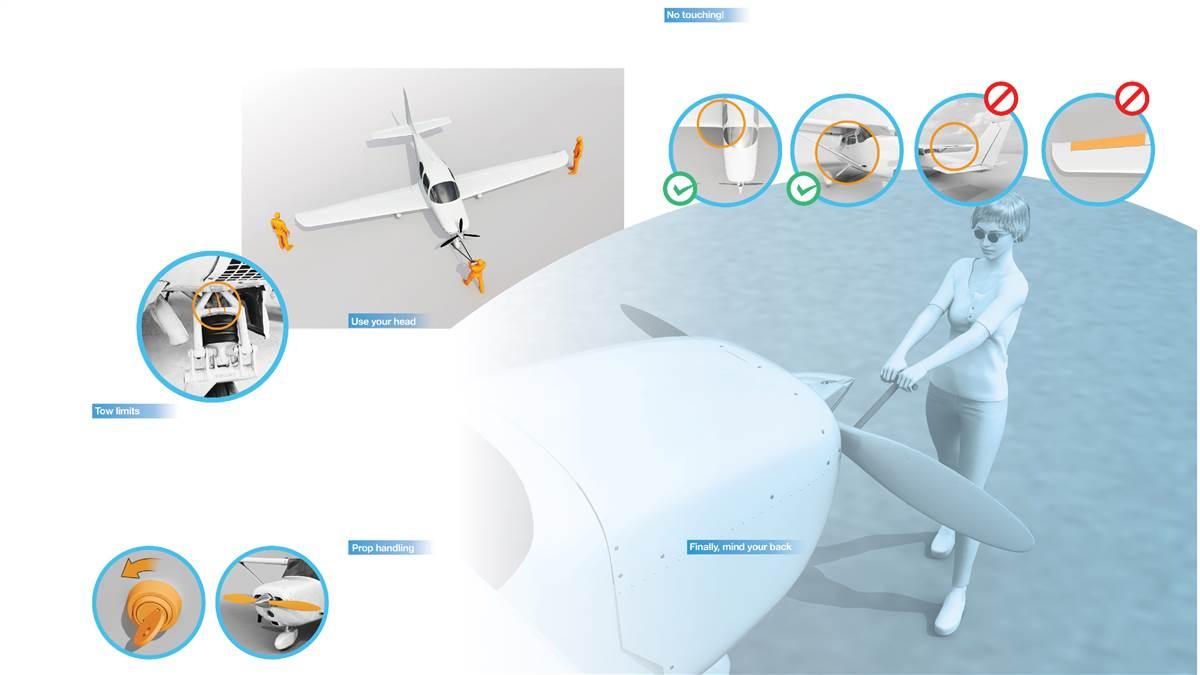Heave-ho
How to tow an airplane

Harder than one might expect. Generally attaching a towbar to the nose gear of an airplane is easy. It’s the rest of it that’s challenging. Here are some potential pitfalls.
Tow limits
Cessnas are great training airplanes in part because they’re durable, and that goes for ground handling as well. You can attach a towbar to a 152 or 172 and turn as far as you like without hurting anything. Do that on a Bonanza or a Mooney and you’ll be making a very expensive trip to the shop. Because of the linkage to the rudder and other systems, many aircraft have discrete tow limits. Sometimes they’re marked with red lines as a reference on the nose gear. Sometimes not. Ask the owner or check the pilot’s operating handbook if you’ve never steered that particular aircraft model before.
Use your head
Most airplane wing tips are plastic or fiberglass, so even a light touch on a wall or door of a hangar can result in a $200 or $300 repair. Whenever possible, use three people—one to push and pull, and two to spot the wings and tail. Most light airplanes move easily on flat ground, but a helping hand is great to get over a hangar lip.
Prop handling
Before you push or pull your steed out of its hangar, ensure the magnetos are off and move the propeller level by pushing in the direction of travel. This will ensure you don’t whack it with the towbar.
Now, the debate. Can you push or pull on the propeller hub? The propeller manufacturers say no. The expert mechanics on AOPA’s Ask the A&Ps podcast say yes. As Mike Busch points out, the propeller is subject to much more intense forces in flight than your hands could ever hope to generate.
No touching
All airplanes have their sensitive spots. Because they’re built to handle the stresses of flight, simple ground handling mistakes can easily cause damage. For example, you can push more or less as hard as possible at the root of the leading edge of the wing, but not at the back of the aileron. Cessna struts are generally OK as well.
The tail is trickier. Some pilots, especially those who fly Cessnas, like to push down on the tail in order to easily spin the airplane around. Don’t do it, says Paul New, a host of Ask the A&Ps. He, like many mechanics, has seen stress fractures caused by such handling. Just use the towbar instead.
Finally, mind your back
The low towbar can be an especially poor position to pull or push with force. Friends and tugs make this easier. Usually when airplanes are damaged, someone was alone or rushing. No doubt the school will be happier with you leaving the airplane in an inconvenient place than coming out to find damage.



